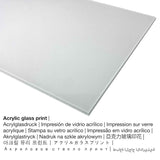William P. Chappel, 1870 - The Lamp Lighter - fine art print
Tax included. Shipping calculated at checkout.
Specifications of the painting named "The Lamp Lighter"
This modern art masterpiece named The Lamp Lighter was created by William P. Chappel. The beyond 150 years old original version measures the size: 6 1/16 x 9 1/8 in (15,4 x 23,2 cm). Oil on slate paper was used by the painter as the technique for the artpiece. Today, the work of art is part of the The Metropolitan Museum of Art's collection. We are pleased to reference that this public domain piece of art is supplied with courtesy of The Metropolitan Museum of Art, New York, The Edward W. C. Arnold Collection of New York Prints, Maps, and Pictures, Bequest of Edward W. C. Arnold, 1954. The creditline of the artpiece is: The Edward W. C. Arnold Collection of New York Prints, Maps, and Pictures, Bequest of Edward W. C. Arnold, 1954. Further, the alignment of the digital reproduction is in landscape format and has a ratio of 3 : 2, which means that the length is 50% longer than the width.
Pick a product material variant
We offer a range of various sizes and materials for every product. We allow you to pick your favorite size and material among the following product individualization options:
- Metal print (aluminium dibond): Aluminium Dibond prints are metal prints with a true effect of depth. The colors are luminous, the fine details are clear and crisp.
- The canvas print: A canvas print, which should not be mistaken with a canvas painting, is a digital copy printed onto canvas material. Canvas prints are relatively low in weight, which implies that it is easy and straightforward to hang your Canvas print without the help of any wall-mounts. A canvas print is suitable for any kind of wall.
- The glossy acrylic glass print (with real glass coating): An acrylic glass print, often named a plexiglass print, will transform your favorite original artwork into lovely wall décor and is a great alternative to canvas and aluminidum dibond prints. Your favorite work of art will be made thanks to state-of-the-art UV direct print technology. It makes intense and deep print colors. With an acrylic glass art print contrasts as well as smaller image details become visible with the help of the precise gradation in the print. The real glass coating protects your custom art replica against sunlight and heat for up to six decades.
- Poster print (canvas material): A poster print is a printed canvas with a fine surface finish. The printed poster is qualified for framing your art print with the help of a customized frame. Please keep in mind, that depending on the absolute size of the canvas poster print we add a white margin between 2-6cm round about the artwork in order to facilitate the framing with your custom frame.
Important note: We do whatever we can in order to depict our art products as accurate as possible and to exhibit them visually. Nonetheless, the tone of the print products and the printing may diverge slightly from the presentation on your device's monitor. Depending on your settings of your screen and the nature of the surface, not all color pigments are printed as exactly as the digital version depicted here. Bearing in mind that all the are processed and printed manually, there may also be minor differences in the motif's size and exact position.
Article table
| Article classification: | art print |
| Method of reproduction: | digital reproduction |
| Production technique: | UV direct print (digital printing) |
| Manufacturing: | German production |
| Stock type: | on demand |
| Product usage: | wall art, wall decoration |
| Orientation: | landscape format |
| Image aspect ratio: | 3 : 2 |
| Interpretation of the aspect ratio: | the length is 50% longer than the width |
| Product material choices: | acrylic glass print (with real glass coating), canvas print, metal print (aluminium dibond), poster print (canvas paper) |
| Canvas on stretcher frame (canvas print) sizes: | 30x20cm - 12x8", 60x40cm - 24x16", 90x60cm - 35x24", 120x80cm - 47x31", 150x100cm - 59x39" |
| Acrylic glass print (with real glass coating): | 30x20cm - 12x8", 60x40cm - 24x16", 90x60cm - 35x24", 120x80cm - 47x31", 150x100cm - 59x39" |
| Poster print (canvas paper) options: | 60x40cm - 24x16", 90x60cm - 35x24", 120x80cm - 47x31" |
| Aluminium print size variants: | 30x20cm - 12x8", 60x40cm - 24x16", 90x60cm - 35x24", 120x80cm - 47x31" |
| Frame: | not available |
Work of art specs
| Painting name: | "The Lamp Lighter" |
| Classification of the artpiece: | painting |
| Broad category: | modern art |
| Period: | 19th century |
| Artpiece year: | 1870 |
| Age of artwork: | 150 years |
| Medium of original artwork: | oil on slate paper |
| Original artwork size: | 6 1/16 x 9 1/8 in (15,4 x 23,2 cm) |
| Museum: | The Metropolitan Museum of Art |
| Location of the museum: | New York City, New York, United States of America |
| Website of Museum: | The Metropolitan Museum of Art |
| License type of artwork: | public domain |
| Courtesy of: | The Metropolitan Museum of Art, New York, The Edward W. C. Arnold Collection of New York Prints, Maps, and Pictures, Bequest of Edward W. C. Arnold, 1954 |
| Artwork creditline: | The Edward W. C. Arnold Collection of New York Prints, Maps, and Pictures, Bequest of Edward W. C. Arnold, 1954 |
Artist information
| Name of the artist: | William P. Chappel |
| Nationality of artist: | American |
| Jobs: | painter |
| Home country: | United States |
| Classification of the artist: | modern artist |
| Died aged: | 77 years |
| Birth year: | 1801 |
| Year died: | 1878 |
Copyright © - www.artprinta.com (Artprinta)
What does the original artwork description of the The Metropolitan Museum of Art state about the work of art painted by William P. Chappel? (© - by The Metropolitan Museum of Art - The Metropolitan Museum of Art)
The city slumbers as a lamplighter makes his rounds, ladder and lantern in hand, in one of only three evening scenes in the series. The waxing crescent moon casts soft shadows on lower Broad Street, but the tranquility of this work belies potential perils lurking in the dark streets. As early as the 1760s, the city’s Common Council attempted to discourage nighttime muggings and robberies by installing whale-oil lamps maintained by municipal lamplighters. It would not be until the 1820s that the dim light from the smoky, unreliable whale-oil lamps was replaced by the luminous glow of a new technology—gas light.














